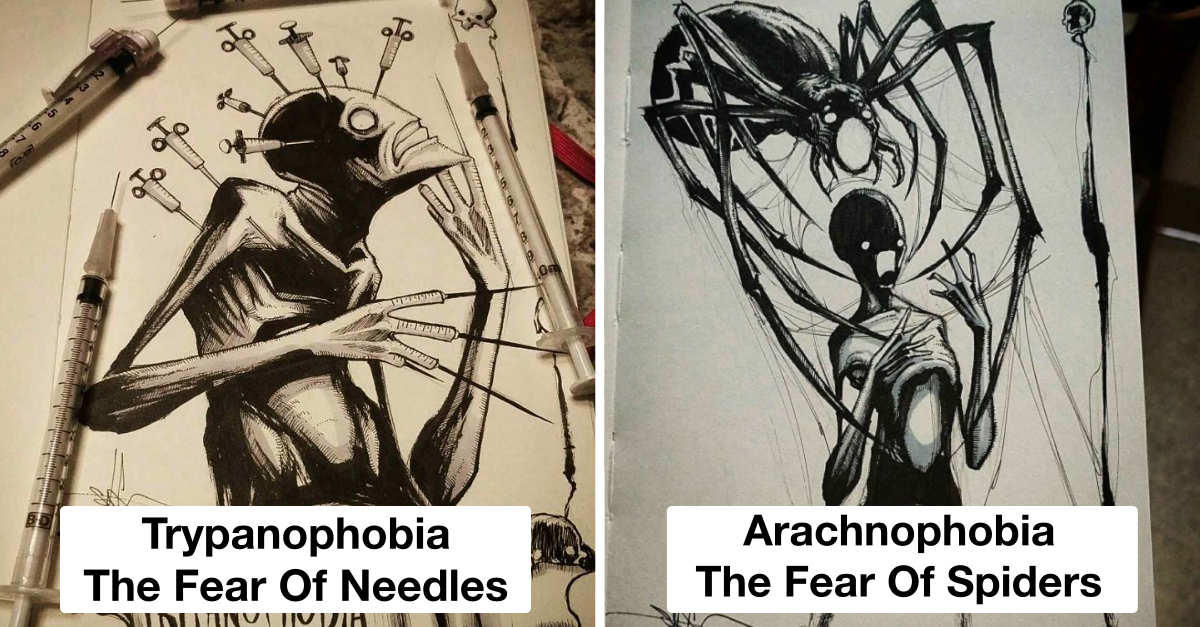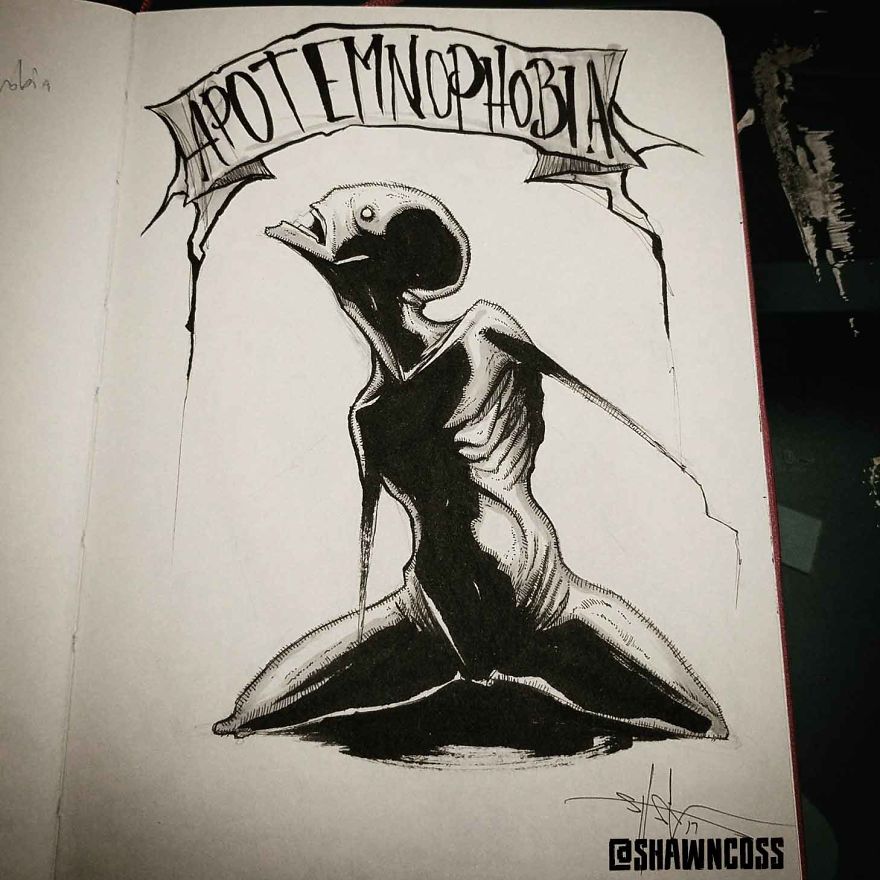
We’ve made some progress as a society when trying to figure out and understand mental health. What used to be the case of people with mental health problems just having to live their lives in constant despair. We’ve also made great headway with phobias, which are just another form of mental health problems that weren’t taken seriously before. Phobias are not just “fears of something” as many often attribute.
It’s a debilitating terror in regards to something very specific that you have no control over, and if you are exposed to what you are phobic, you will have a panic attack that will mess you up considerably. Still, even in present-day, many people don’t fully understand what phobias can be like, so that’s where Shawn Cross comes in. Having started this entire thing as an inktober challenge, he’s now using it as a platform to champion mental health.
Source: Instagram || amnclothing.com

Medical News Today outline phobias in an ethical, medical way!
A phobia is a type of anxiety disorder that causes an individual to experience extreme, irrational fear about a situation, living creature, place, or object. When a person has a phobia, they will often shape their lives to avoid what they consider to be dangerous. The imagined threat is greater than any actual threat posed by the cause of terror. Phobias are diagnosable mental disorders.




Specific phobias are known as simple phobias as they can be linked to an identifiable cause that may not frequently occur in the everyday life of an individual, such as snakes. These are therefore not likely to affect day-to-day living in a significant way. Social anxiety and agoraphobia are known as complex phobias, as their triggers are less easily recognized. People with complex phobias can also find it harder to avoid triggers, such as leaving the house or being in a large crowd.





More research is needed to confirm exactly why a person develops agoraphobia or social anxiety. Researchers currently believe complex phobias are caused by a combination of life experiences, brain chemistry, and genetics. They may also be an echo of the habits of early humans, leftover from a time in which open spaces and unknown people generally posed a far greater threat to personal safety than in today’s world.




Some areas of the brain store and recall dangerous or potentially deadly events. If a person faces a similar event later on in life, those areas of the brain retrieve the stressful memory, sometimes more than once. This causes the body to experience the same reaction. In a phobia, the areas of the brain that deal with fear and stress keep retrieving the frightening event inappropriately. Researchers have found that phobias are often linked to the amygdala, which lies behind the pituitary gland in the brain. The amygdala can trigger the release of “fight-or-flight” hormones. These put the body and mind in a highly alert and stressed state.







Phobias are highly treatable, and people who have them are nearly always aware of their disorder. This helps diagnosis a great deal. Speaking to a psychologist or psychiatrist is a useful first step in treating a phobia that has already been identified. If the phobia does not cause severe problems, most people find that simply avoiding the source of their fear helps them stay in control. Many people with specific phobias will not seek treatment as these fears are often manageable.










What about you? Do you have any of these?